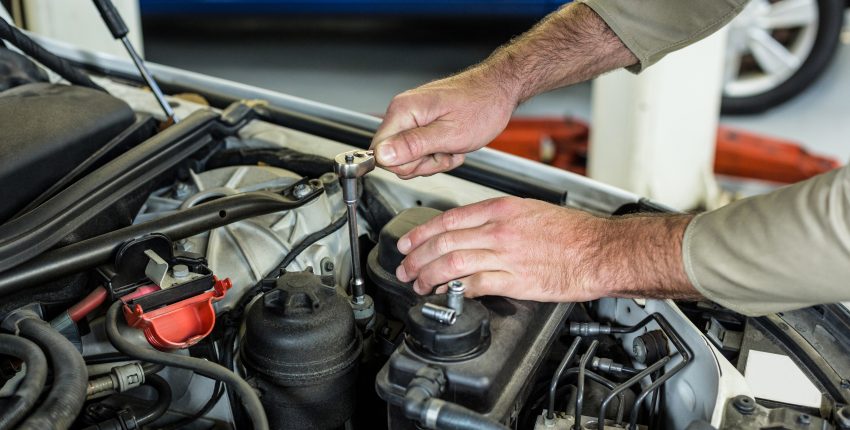Experiencing car troubles can be stressful, especially when a warning light appears on your dashboard unexpectedly. If the battery light comes on while driving through Lower Sackville, NS, it often signals a malfunctioning alternator. This guide provides a comprehensive overview of alternator replacement, including the function of an alternator, signs of failure, replacement steps, troubleshooting tips, and maintenance advice. Following this information can help you keep your vehicle reliable and safe.
Understanding the Role of the Alternator
The alternator is a vital component of your vehicle’s electrical system. It converts mechanical energy from the engine into electrical energy. This electricity powers essential systems, such as headlights, the radio, and dashboard instruments, while keeping the battery charged. Without a functioning alternator, the battery can quickly drain, leaving your vehicle unable to start or operate correctly.
Symptoms of a Failing Alternator
Identifying alternator problems early can prevent breakdowns. Common signs of a failing alternator include:
- Dimming or flickering headlights
- Sluggish electrical systems
- Dead or repeatedly drained battery
If your headlights dim while accelerating or your radio and other electronics cut out unexpectedly, these are strong indicators that your alternator may need attention. Alternators fail over time due to wear on internal components such as the rotor or stator, which can degrade with extended use, resulting in reduced performance.
Preparing for Alternator Replacement
Proper preparation ensures a smooth replacement process. Gather the necessary tools and understand the steps involved before starting the work.
Essential Tools and Equipment
To replace an alternator, you will need:
- Socket set and wrenches
- Multimeter for electrical testing
- Safety gloves
- Vehicle-specific alternator replacement service manual
Having the correct tools and a reference guide for your vehicle model can prevent errors and streamline the process.
Safety Precautions
Safety is critical. Always:
- Park your vehicle on a flat, stable surface
- Allow the engine to cool before beginning work
- Disconnect the battery to prevent electrical shocks
- Wear gloves to protect your hands
Following these precautions minimizes the risk of injury and electrical hazards during replacement.
Step-by-Step Alternator Replacement
Replacing an alternator is manageable with careful attention to detail. Follow these steps for a successful replacement.
Removing the Old Alternator
- Disconnect the Battery
Begin by disconnecting the negative battery cable to prevent accidental electrical shocks. - Remove the Belt
Loosen the tensioner and remove the belt from the alternator pulley. This may require applying steady force to relieve tension. - Unbolt the Alternator
Locate the mounting bolts and remove them. Carefully detach the alternator from its position.
Installing the New Alternator
- Position the New Alternator
Place the new alternator in the mounting bracket and align it properly before securing it with bolts. - Reattach the Belt
Loop the belt onto the alternator pulley and adjust the tensioner to ensure proper tightness. - Reconnect the Battery
Reconnect the negative battery cable and start the vehicle to verify that the alternator is functioning correctly.
The cost of an alternator can range from $200 to $500 depending on your vehicle make and model. DIY replacement saves labor costs, but professional service may offer additional assurance.
Troubleshooting Common Issues
Even with careful installation, problems may occur. The following are common issues and solutions:
- Belt Squeal: Noise after installation usually indicates incorrect belt tension. Adjust the tensioner until the noise stops.
- Electrical Failures: If electrical systems are still malfunctioning, check all alternator connections to ensure wires are secure and test battery health.
Resolving these issues promptly helps maintain vehicle reliability and prevents further damage.
Professional Alternator Replacement Services
Although DIY replacement is possible, professional services can provide significant advantages. Bluestone Automotive in Lower Sackville, NS, offers expert alternator replacement and diagnostics.
Expertise and Experience
Technicians at Bluestone Automotive have the knowledge and experience to efficiently diagnose and repair alternator problems. Using specialized equipment, they ensure your vehicle operates safely and reliably. Professional services guarantee accurate installation and long-lasting performance.
Time and Convenience
Alternator replacement can be time-consuming. Choosing professional service saves time and eliminates the risk of errors. Technicians handle the process while you avoid the stress of performing complex mechanical tasks yourself.
Seasonal Alternator Maintenance
Proper maintenance can extend the life of your alternator and prevent unexpected failures.
Winter Care
Cold temperatures place additional strain on your vehicle’s electrical system. Ensure your alternator and battery are in good condition before winter to reduce the risk of breakdowns.
Summer Precautions
High temperatures can affect alternator performance and belt integrity. Regularly inspect the belt for signs of wear and replace it if necessary to maintain proper alternator function.
Maintaining a functioning alternator is essential for vehicle reliability and safety. Regular inspections, timely replacement, and seasonal care can prevent unexpected failures and keep your car operating efficiently. Whether you choose to perform the replacement yourself or rely on professional services, ensuring your alternator is in optimal condition protects both your vehicle and your peace of mind.
If you are in Lower Sackville, NS, Bluestone Automotive is ready to assist with alternator replacement and other automotive needs. Visit 474 Cobequid Rd or call for expert service and guidance to keep your vehicle running smoothly.


